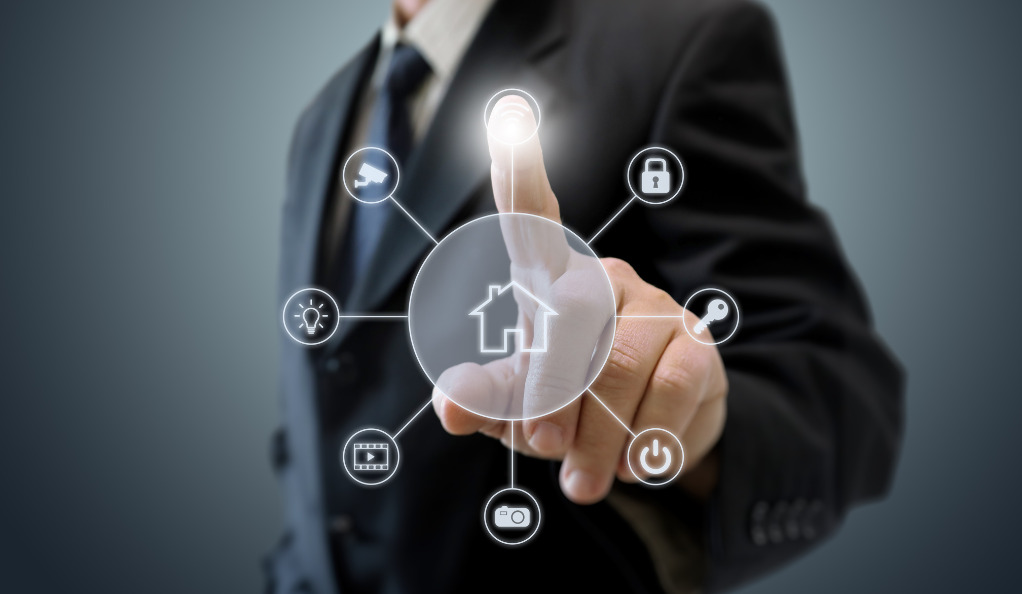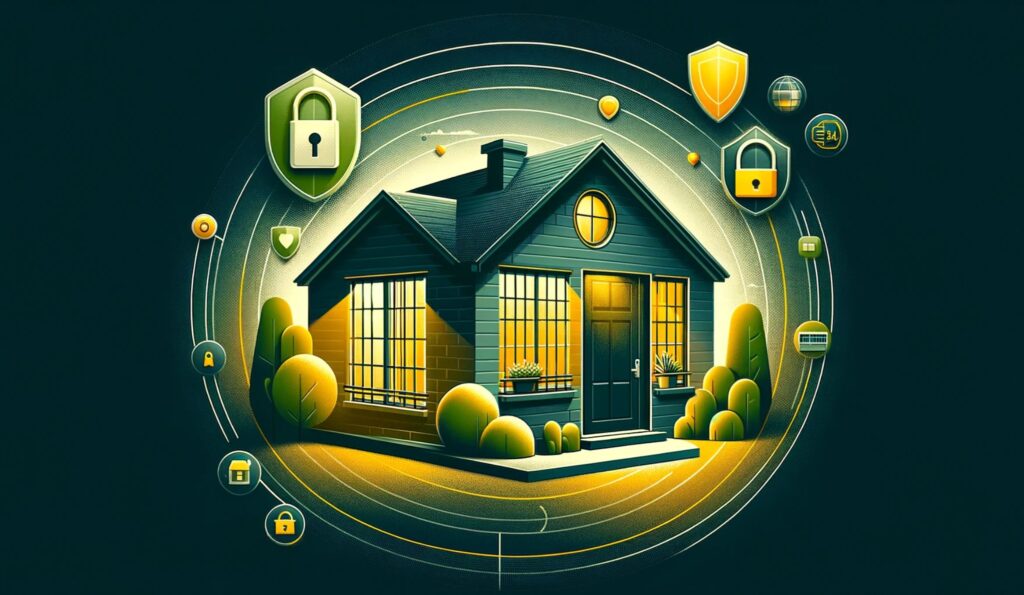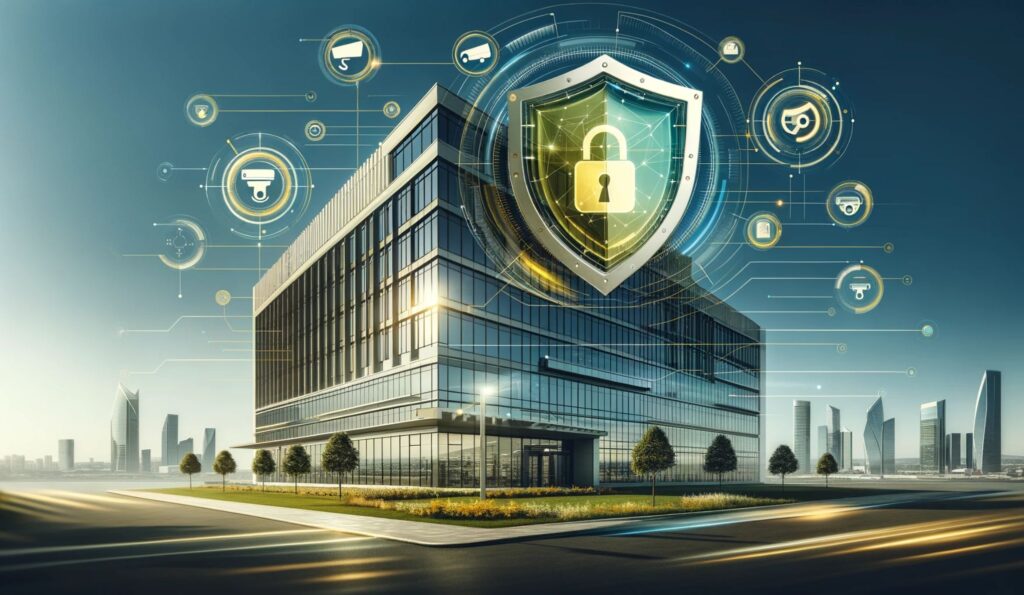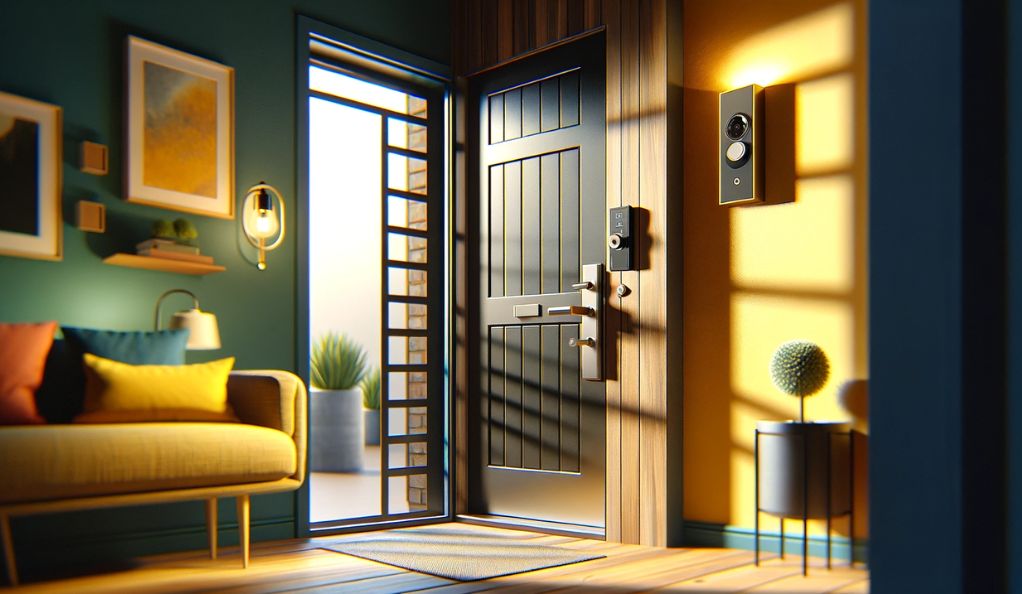In the quiet corners of our homes, where we seek solace and safety, the concept of security has always held paramount importance. From the earliest human settlements to the sprawling urban landscapes of today, the desire to protect one’s abode and loved ones has been a universal sentiment. But how has this need for security evolved over the millennia? How did we transition from rudimentary physical barriers to the sophisticated biometric systems of today?
The journey of home security is a fascinating tale of innovation, adaptation, and resilience. It mirrors the broader evolution of human civilization, reflecting our changing lifestyles, technological advancements, and shifting perceptions of safety. As we stand on the cusp of a new era, with technology reshaping every facet of our lives, it’s worth taking a moment to trace the transformative journey of home security. From the simple locks carved out of wood to the digital fingerprints that grant us access, this article delves deep into the evolution of home security, offering insights into its past, present, and the exciting future that lies ahead.
The Age of Traditional Security
The concept of home security is as old as the notion of shelter itself. Since the dawn of civilization, humans have sought ways to protect their homes and loved ones from external threats. The earliest forms of home security were simple yet effective, relying on physical barriers and human vigilance. Let’s delve deeper into this age-old practice.

Physical Barriers: The First Line of Defense
Doors and Windows: The most basic form of home security has always been the physical barrier. Early human settlements relied on natural barriers like caves or elevated terrains. As civilizations evolved, so did the complexity of these barriers. The invention of doors and windows marked a significant advancement. These not only provided access and ventilation but also became the primary points of vulnerability.
| Era | Common Materials for Doors and Windows |
|---|---|
| Stone Age | Wood, Animal Skins |
| Bronze Age | Wood, Metal Reinforcements |
| Iron Age | Solid Metal, Reinforced Wood |
| Medieval Period | Wood, Iron Bars, Metal Grilles |
Locks: The need to secure doors led to the invention of locks. The earliest locks, dating back to ancient Egypt around 4000 BC, were made of wood and used a simple pin mechanism. Over time, locks became more sophisticated. By the Roman era, metal locks with intricate key designs were common.
Limitations and Vulnerabilities
While doors, windows, and locks provided a basic level of security, they were not foolproof. Here were some of the challenges:
- Material Weakness: Early wooden doors and windows could be easily broken or set on fire. Even metal reinforcements had their vulnerabilities, such as rusting or being melted down.
- Lock Picking: As locks became more common, so did the skill of lock picking. Thieves and intruders developed techniques to bypass these locks, leading to an ongoing battle between lock makers and breakers.
- Human Error: Often, the biggest vulnerability was human oversight. Forgetting to lock a door, losing a key, or trusting the wrong individual could easily compromise security.
The Role of Community
In addition to physical barriers, early communities played a crucial role in security. Neighbors looked out for one another, and the concept of “community watch” was born. In many ancient civilizations, night watchmen would patrol streets, sounding an alarm at the sign of any disturbance.
In this age of traditional security, while the methods were rudimentary, the principles were clear: deter, detect, and delay. As we transitioned into more modern times, these principles remained, but the methods underwent revolutionary changes, paving the way for the security systems we recognize today.
The Rise of Alarm Systems
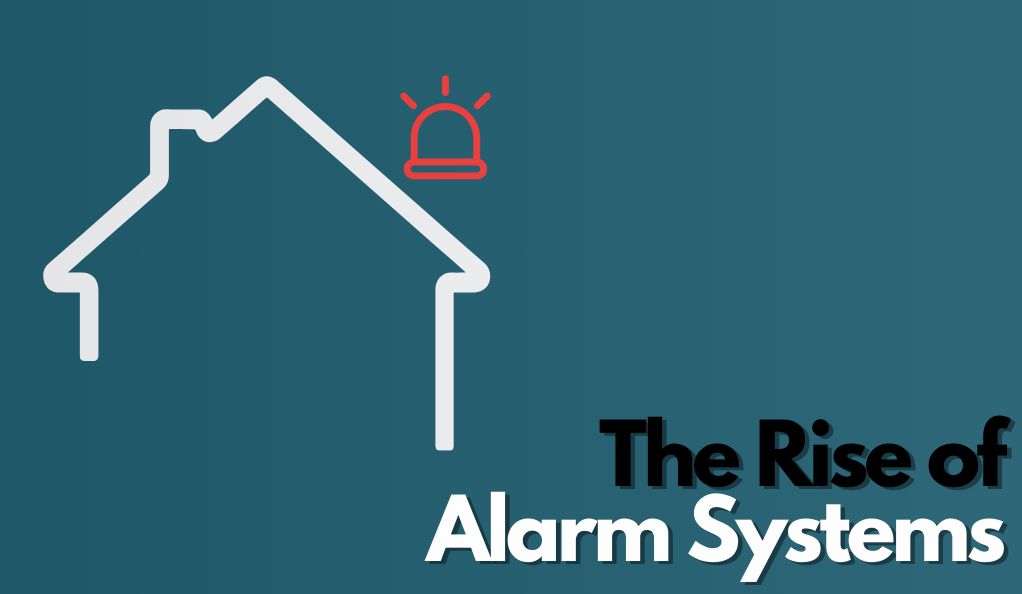
As civilizations grew and urbanized, the challenges of security became more complex. While physical barriers like doors and locks remained foundational, they were no longer sufficient on their own. The need for an early warning system, a way to alert inhabitants of potential threats, became evident. This led to the advent of alarm systems.
The Birth of Security Alarms
The idea behind a security alarm is simple: detect an intrusion and alert the inhabitants or authorities. The earliest alarms were mechanical in nature. For instance, in ancient China, large establishments often had intricate systems of tripwires connected to bells or gongs. An intruder stepping on a wire would inadvertently sound the alarm.
In the Western world, the 19th century saw the patenting of the first electromagnetic alarms. These systems used magnets and circuits to detect unauthorized entry. A broken circuit, usually caused by opening a door or window, would trigger the alarm.
Components of Modern Alarm Systems
Modern alarm systems are a symphony of components working in harmony. Here’s a brief overview:
- Control Panel: The brain of the system, it coordinates between various components and communicates with external monitoring services.
- Sensors: Devices that detect movements or unauthorized entries. They come in various forms, such as door and window sensors, motion detectors, and glass break detectors.
- Sirens: Loud alarms that sound off when a sensor is triggered, alerting inhabitants and potentially scaring off intruders.
- Keypads: Used by homeowners to arm or disarm the system, often requiring a passcode.
- Monitoring Service: A third-party service that receives alerts from the control panel and can notify authorities or take other pre-determined actions.
Evolution and Advancements
With the advent of technology, alarm systems have seen significant advancements:
- Wireless Systems: Earlier alarm systems required extensive wiring, making installation cumbersome. Modern systems often use wireless technology, making them more flexible and easier to install.
- Smart Integration: Today’s alarm systems can be integrated with smart home devices. This allows homeowners to control their security systems remotely using smartphones or computers.
- Real-time Monitoring: Advanced systems offer real-time monitoring, sending live video feeds to homeowners or security services, ensuring immediate response to threats.
The development of alarm systems marked a significant leap in home security. They not only deterred potential intruders but also provided homeowners with a sense of control and peace of mind. As technology continues to evolve, so does the sophistication and capabilities of these systems, promising even greater security for our homes.
Sensors: The Eyes and Ears of Security
The essence of any robust security system lies in its ability to detect threats. While physical barriers and alarms provide the necessary deterrents and alerts, sensors act as the vigilant guardians, constantly monitoring and detecting any anomalies. Over the years, the technology behind these sensors has evolved dramatically, enhancing their accuracy and range of detection.
Different Types of Sensors
Sensors come in various forms, each designed to detect specific types of disturbances:
- Motion Sensors: These are perhaps the most common type of security sensors. They detect movement within a particular area. Infrared sensors, a subtype, detect heat and are especially effective in identifying the presence of humans.
- Door and Window Sensors: These are contact-based sensors. They consist of two parts: one attached to the door or window and the other to the frame. When a door or window is opened, breaking the contact, the sensor is triggered.
- Glass Break Detectors: These sensors listen for the specific frequency of breaking glass. If someone were to shatter a window in an attempt to enter, these sensors would detect it.
- Vibration Sensors: Often used on walls or in areas where motion sensors might not be effective, these detect vibrations, alerting homeowners to potential break-ins.
The Role of Technology in Enhancing Sensors
The effectiveness of sensors has been greatly amplified by technological advancements:
- Range and Sensitivity: Modern sensors can cover larger areas and are fine-tuned to reduce false alarms. For instance, many motion sensors can differentiate between a human and a pet, preventing unnecessary alerts.
- Connectivity: With the rise of the Internet of Things (IoT), sensors can now be interconnected. This means that triggering one sensor can activate others, creating a comprehensive security network.
- Smart Notifications: Integrated with smartphones and computers, modern sensors can send instant notifications to homeowners, allowing them to take immediate action.
- Battery Life and Durability: Today’s sensors are designed to last longer and withstand various environmental conditions, ensuring they remain operational when needed most.
The Human Element
While technology plays a pivotal role, the human element cannot be overlooked. Proper placement of sensors, regular maintenance checks, and understanding their functionalities are crucial. Homeowners need to be educated about their security systems to ensure they’re utilized to their fullest potential.
Sensors, in many ways, represent the fusion of age-old security principles with cutting-edge technology. They are a testament to humanity’s relentless pursuit of safety and innovation. As we move forward, it’s exciting to imagine the next frontier of detection and monitoring, ensuring our homes remain our sanctuaries.
Modern Innovations: Biometrics and Beyond

The digital age has ushered in a new era of home security, marked by rapid advancements and the integration of cutting-edge technologies. Among these, biometrics stands out as a revolutionary leap, transforming the way we perceive and implement security measures.
Understanding Biometrics
Biometrics refers to the identification and verification of individuals based on their unique physiological or behavioral characteristics. Unlike traditional security measures, which rely on something you have (a key) or something you know (a password), biometrics is based on who you are, making it inherently more secure.
Common Biometric Modalities:
- Fingerprint Recognition: One of the most widely used biometric systems, it analyzes the unique patterns of ridges and valleys on a person’s fingertip.
- Facial Recognition: This system identifies individuals by analyzing distinct facial features, such as the distance between the eyes or the shape of the nose.
- Iris and Retina Scanning: These methods focus on the unique patterns found in the eyes. While iris scanning examines the colored part of the eye, retina scanning analyzes the blood vessel patterns in the thin layer at the back of the eye.
- Voice Recognition: This modality identifies individuals based on the unique characteristics of their voice, such as pitch, tone, and cadence.
Advantages of Biometric Systems
- Enhanced Security: Biometric data is unique to each individual, making it extremely difficult to replicate or forge.
- Convenience: No more fumbling for keys or trying to remember complex passwords. A simple touch or glance is often enough to gain access.
- Reduced Risk of Unauthorized Access: Since biometric data is inherent to an individual, there’s no risk of it being lost, stolen, or shared.
- Integration with Smart Systems: Modern biometric systems can be seamlessly integrated with other smart home devices, offering a holistic security solution.
Potential Concerns and Ethical Implications
While biometrics offers numerous advantages, it’s not without its challenges:
- Privacy Concerns: The collection, storage, and use of biometric data raise significant privacy issues. Ensuring that this sensitive information is protected and not misused is paramount.
- False Positives and Negatives: No system is infallible. There’s always a risk, albeit minimal, of false acceptances (unauthorized individual granted access) or false rejections (authorized individual denied access).
- Physical Changes: Factors like aging, injuries, or surgeries can affect biometric data, potentially impacting system accuracy.
The integration of biometrics into home security represents a significant stride towards a safer and more secure future. As technology continues to evolve, it’s crucial to strike a balance between leveraging these advancements and addressing the associated challenges. The goal remains clear: to create a secure environment where individuals can thrive without compromising their privacy or freedom.
The Role of Monitoring and Surveillance
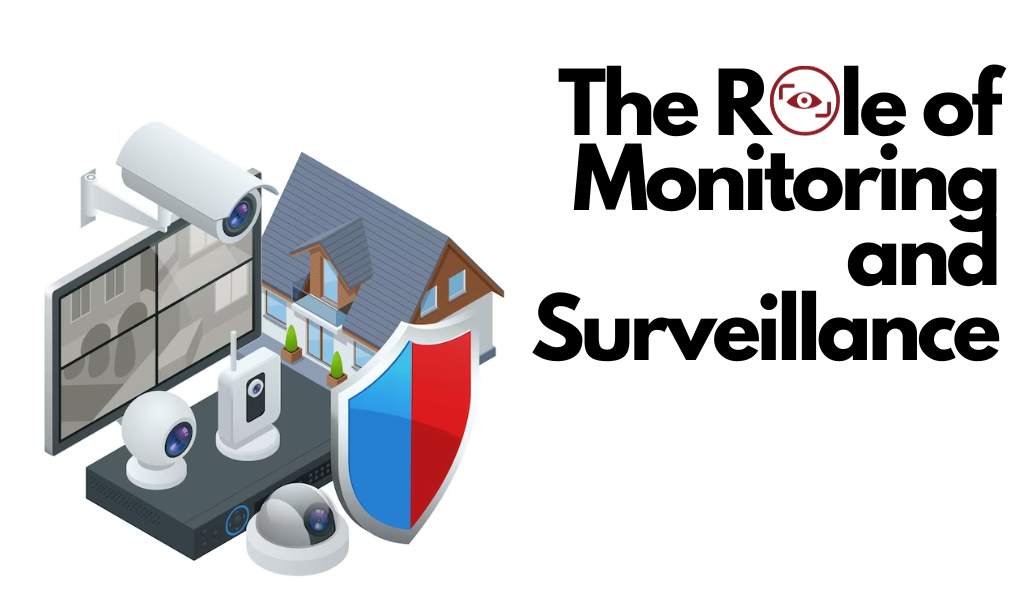
In the vast tapestry of home security, monitoring and surveillance act as the watchful eyes, continuously observing and recording activities to ensure safety. While sensors and alarms act as immediate deterrents, surveillance systems provide a more comprehensive view, allowing homeowners to review, analyze, and respond to potential threats.
The Emergence of CCTV
Closed-Circuit Television (CCTV) systems have been a cornerstone of surveillance for decades. Initially used in high-security zones and commercial establishments, their utility soon became apparent for residential security.
- Analog vs. Digital: Early CCTV systems were analog, transmitting video over coaxial cables to a central location. Modern systems, however, are digital, offering higher resolution, better image quality, and the ability to store and transmit data over the internet.
- Remote Access: One of the significant advantages of modern CCTV systems is the ability to access footage remotely. Whether you’re in another room or another country, you can view live feeds from your cameras via smartphones or computers.
Surveillance in the Age of Smart Homes
With the rise of smart home technology, surveillance has become more integrated and intelligent.
- Motion Detection: Modern cameras can detect motion, automatically recording when there’s activity and sending alerts to homeowners.
- Night Vision: Advanced cameras come equipped with infrared capabilities, allowing them to capture clear footage even in low-light conditions.
- Two-way Communication: Some surveillance cameras now offer two-way audio, enabling homeowners to communicate with visitors or potential intruders.
- Cloud Storage: Instead of relying on local storage, which can be limited, many systems now offer cloud storage solutions, ensuring that footage is safe, accessible, and easily retrievable.
Privacy and Ethical Considerations
While surveillance systems offer enhanced security, they also raise important ethical and privacy concerns:
- Neighborly Relations: Cameras should be positioned to monitor your property without infringing on the privacy of neighbors.
- Data Security: With digital storage and cloud solutions, ensuring that the footage remains confidential and protected from potential hackers is crucial.
- Consent: In some jurisdictions, it’s essential to inform visitors, through signs or notifications, that they are being recorded.
Monitoring and surveillance, when implemented responsibly, can be powerful tools in the home security arsenal. They not only deter potential threats but also provide invaluable evidence in case of incidents. As we continue to embrace technology in our quest for safety, it’s imperative to do so with a keen awareness of the broader implications, ensuring that security never comes at the cost of personal freedoms.
Challenges and Concerns in Modern Security
As we navigate the intricate landscape of modern home security, it’s essential to recognize that while technological advancements offer enhanced protection, they also present new challenges and concerns. Balancing the promise of cutting-edge security with potential pitfalls is crucial for homeowners and industry professionals alike.
The Double-Edged Sword of Connectivity
The rise of smart homes and interconnected devices has undoubtedly revolutionized home security. However, this increased connectivity also introduces vulnerabilities:
- Cybersecurity Threats: As security systems become more connected to the internet, they become potential targets for hackers. A compromised system can not only disable security measures but also invade personal privacy.
- Reliability on Power and Internet: Modern security systems often rely on continuous power and internet connectivity. Outages, whether intentional or accidental, can render these systems ineffective.
Data Privacy and Ownership
With the proliferation of digital surveillance and biometric data collection, questions about data ownership and privacy have come to the forefront:
- Data Storage and Access: Who has access to the data? How long is it stored? These are critical questions that homeowners need to address when implementing modern security systems.
- Potential Misuse: There’s always a risk of data being misused, either by malicious actors or, in some cases, by the very companies that provide security services.
Balancing Security with Personal Freedom
As security measures become more sophisticated, there’s a fine line between protection and intrusion:
- Over-surveillance: There’s a risk of creating an environment where individuals feel constantly watched, leading to discomfort and a sense of lost personal freedom.
- False Alarms: Advanced sensors and alarms, while efficient, are not infallible. False alarms can lead to unnecessary panic, potential fines, and a general sense of distrust towards the system.
Navigating the challenges of modern home security requires a holistic approach. It’s not just about implementing the latest gadgets but understanding their implications, strengths, and weaknesses. As we look to the future, the goal remains clear: to create a secure environment that respects individual rights, values privacy, and fosters trust.
The Future of Home Security
As we stand at the intersection of technological innovation and evolving societal needs, the future of home security promises to be both exciting and transformative. While we can only predict the trajectory, certain trends and advancements are poised to redefine the way we protect our homes and loved ones.
Artificial Intelligence and Machine Learning
The integration of AI and machine learning into home security systems is set to revolutionize threat detection and response:
- Predictive Analysis: AI can analyze patterns and behaviors, predicting potential security breaches before they occur, allowing for proactive measures.
- Enhanced Recognition: Machine learning algorithms can improve facial and voice recognition systems, reducing false alarms and increasing accuracy.
- Automated Responses: In the event of a security breach, AI-driven systems can take pre-determined actions, from locking down the property to notifying authorities, ensuring swift responses.
Integration with Smart Cities
As urban landscapes evolve into smart cities, home security will become an integral part of a larger, interconnected ecosystem:
- Real-time Data Sharing: Homes can share security data with neighborhood networks or local law enforcement, creating a collaborative security environment.
- Traffic and Crowd Monitoring: Smart city infrastructure can provide data on unusual crowd movements or traffic patterns, alerting homeowners to potential threats.
Augmented Reality (AR) and Virtual Reality (VR)
AR and VR technologies offer exciting possibilities for home security:
- Virtual Security Walkthroughs: Homeowners can use VR to conduct virtual walkthroughs of their property, identifying potential vulnerabilities.
- AR-Assisted Monitoring: Augmented reality can overlay security feeds with additional information, such as identifying registered residents versus unknown individuals.
Biometrics 2.0
While current biometric systems focus on fingerprints, facial recognition, and voice patterns, the future may see the inclusion of more advanced modalities:
- Heartbeat and Brainwave Recognition: These unique biological patterns could offer new ways to authenticate individuals, adding another layer of security.
- Behavioral Biometrics: Analyzing patterns in the way individuals walk, type, or even use a device can serve as additional authentication methods.
Ethical and Regulatory Landscape
As technology advances, the ethical and regulatory landscape will need to keep pace:
- Data Protection Laws: Ensuring that personal data, especially biometric information, is protected will be paramount. Regulations may dictate how this data is stored, accessed, and used.
- Ethical Use of AI: As AI becomes more integrated into security systems, ensuring its ethical use, free from biases and with respect for individual rights, will be crucial.
The horizon of home security is vast and ever-evolving. While challenges remain, the potential for creating safer, more secure environments is immense. Embracing innovation, while staying grounded in ethical considerations, will be the key to shaping a future where homes are not just shelters but fortresses of safety and comfort.
Conclusion
In conclusion, the evolution of home security is a remarkable journey that mirrors the progress of civilization itself. From the simplicity of wooden doors to the intricacies of biometric authentication, it showcases our ability to adapt and innovate in the pursuit of safety. As we embrace the future, it’s crucial to recognize the potential and pitfalls of modern security technologies. Striking the right balance between robust protection and the preservation of personal freedoms remains the guiding principle.
In this ever-changing landscape, our homes should remain not just fortresses but havens where we find solace and peace. With the responsible integration of cutting-edge technologies, ethical considerations, and a commitment to safeguarding privacy, we can look forward to a future where homes are not just secure, but also smart, intuitive, and truly reflective of the evolving needs and aspirations of humanity.

